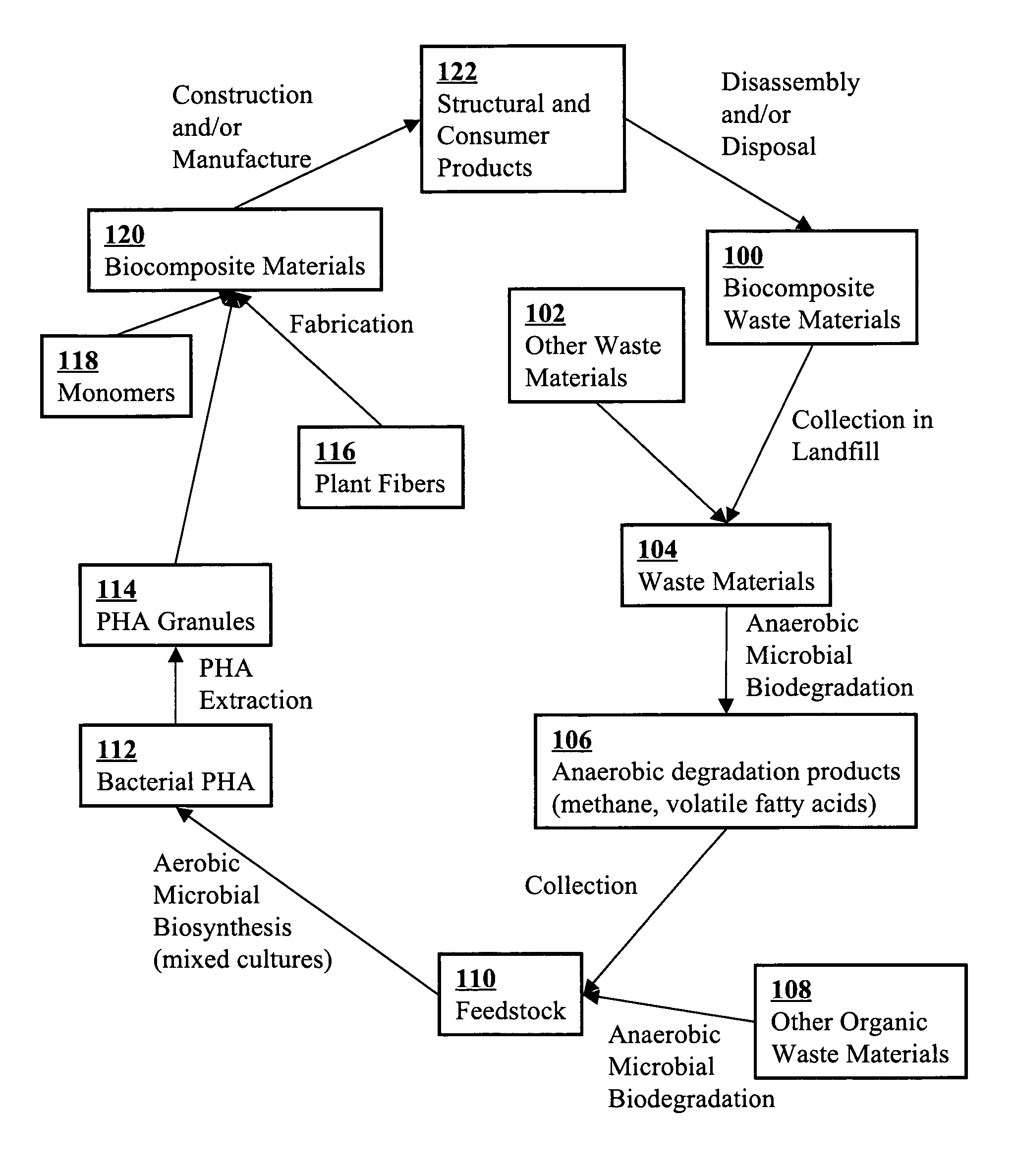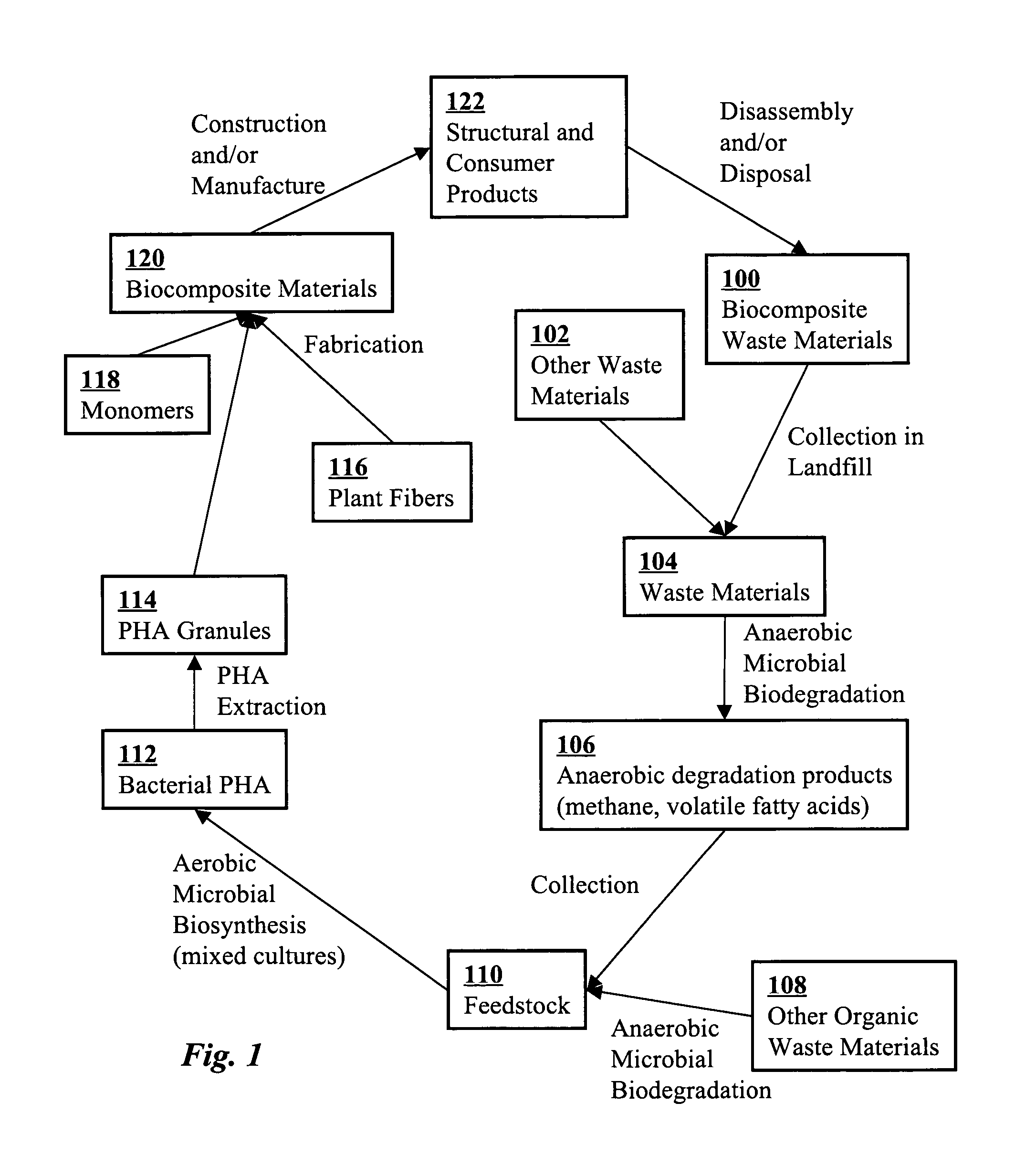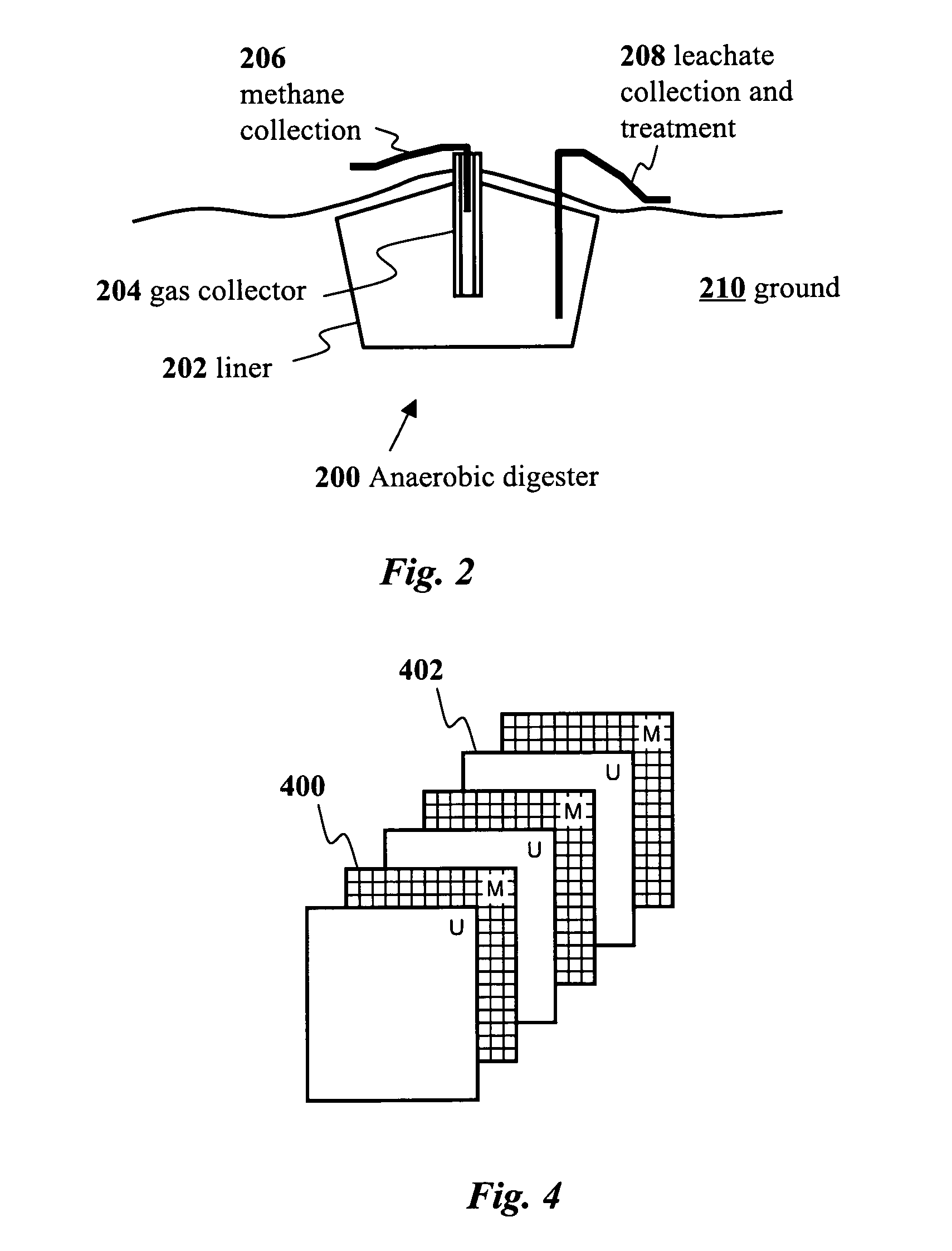Bacterial poly(hydroxy alkanoate) polymer and natural fiber composites
a polymer and natural fiber technology, applied in the field of biocomposite materials, can solve the problems of affecting the natural environment, the challenge of this approach, and the existing biocomposites and their associated biotransformation cycles, and achieves the effects of improving the bond between the fibers and the pha resin matrix, rapid and/or optimal biogas production, and good in-service performan
- Summary
- Abstract
- Description
- Claims
- Application Information
AI Technical Summary
Benefits of technology
Problems solved by technology
Method used
Image
Examples
Embodiment Construction
[0010]In the present description, the term “biocomposite” is defined as a material composed of plant fibers embedded in a resin matrix, where the resin matrix is derived from plants, agricultural waste, municipal waste, anaerobic fermentation products, and / or biocomposites. The term “biodegradation” is defined as a breaking down of organic substances by living organisms, e.g., bacteria. In the present context, biodegradation is intended to include anaerobic fermentation. Similarly, “biosynthesis” is defined as a production of chemical compounds from simpler reagents by living organisms, e.g., bacteria.
[0011]FIG. 1 is a schematic diagram of a biotransformation cycle into which the methods of the present invention are intended to fit. Waste materials 104, which may include both biocomposite waste materials 100 as well as other organic solid waste materials 102 are collected in a modern landfill (e.g., anaerobic digester) where they undergo anaerobic microbial biodegradation.
[0012]FIG....
PUM
| Property | Measurement | Unit |
|---|---|---|
| volatile | aaaaa | aaaaa |
| energy efficient | aaaaa | aaaaa |
| concentrations | aaaaa | aaaaa |
Abstract
Description
Claims
Application Information
 Login to View More
Login to View More - R&D
- Intellectual Property
- Life Sciences
- Materials
- Tech Scout
- Unparalleled Data Quality
- Higher Quality Content
- 60% Fewer Hallucinations
Browse by: Latest US Patents, China's latest patents, Technical Efficacy Thesaurus, Application Domain, Technology Topic, Popular Technical Reports.
© 2025 PatSnap. All rights reserved.Legal|Privacy policy|Modern Slavery Act Transparency Statement|Sitemap|About US| Contact US: help@patsnap.com



